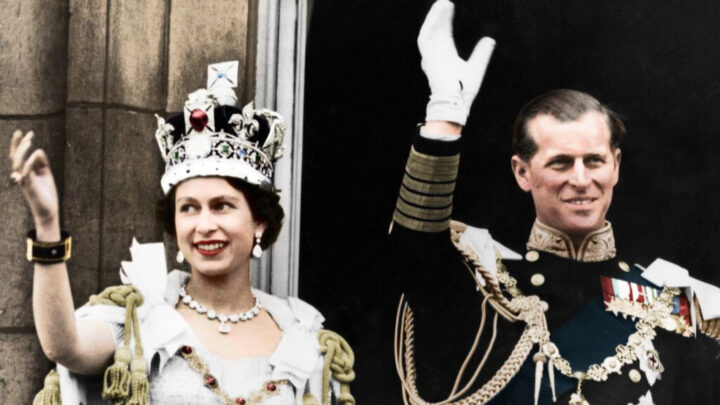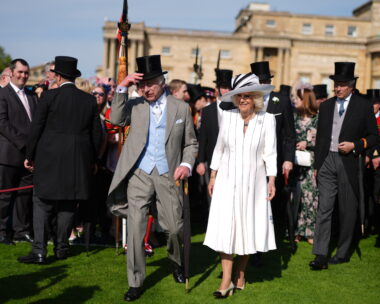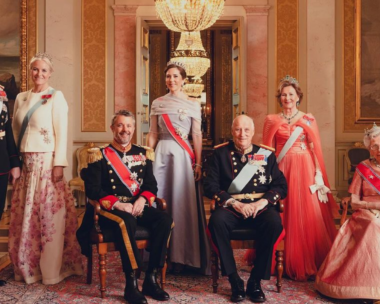On April 11 1936 The Australian Women’s Weekly’s celebrity astrologer June Marsden made what, with hindsight, is a breath-taking prediction. “Princess Elizabeth will make history!” she announced.
Now at that point Princess Elizabeth was niece to the reigning King with no expectation of her being crowned the Queen, which makes what comes next astonishingly prophetic.
“The horoscope of Princess Elizabeth is a remarkable one,” writes June. “It indicates that she will make history in some way or another; that she will not only govern her own life almost entirely, but the lives of many others. As the years go by, she will develop an individuality which will partake of the strength of Queen Elizabeth [referring to Elizabeth I] and the charm of Queen Victoria.
“At the moment of her birth, the stars were so strongly placed in the heavens that the word ‘destiny’ is likely to prove synonymous with the position of power and importance which she is likely to hold in world affairs.”

“Perhaps the most remarkable part of this individual horoscope is the fact that at the hour of her birth most of the really important planets were crowded together in the heavens, and just about to appear over the eastern horizon. This depicts an intensely strong personality.” June supposes.
“It will be found that Princess Elizabeth knows exactly what she wants – and when she wants it… She is naturally forceful and forthright, capable, proud and included at times to dominate. She is a born leader, capable of guiding the destinies of others and delighting in the consequent activities,” the horoscope continued.
“She will attract to herself an amazing degree of service, loyalty, and love, and gain the admiration of others because of her courageous and pioneering spirit. She will inaugurate many new and unusual ideas and regulations, not only in her own affairs but also in the activities of humane institutions.”
“Princess Elizabeth’s birth on April 21, just when the Sun changes from the sign Aries to that of Taurus, depicts a duality of character. As a result it is possible that on one will ever know the real Elizabeth.”
“Princess Elizabeth will be loving and lovable, for love and good will are absolutely essential to her happiness, and she will do much to earn them.
During the forthcoming year, much good fortune should come to Princess Elizabeth’s life.”
“The planetary configurations are particularly lavish in her favour, and should bring her much excitement, many changes, advancement or happiness through Royalty and others in high positions.”

So far so good… June could simply be shooting in the dark picking up on the widespread popularity of the princess, albeit with incisive foresight, but then comes the kicker.
“An unfriendly planetary influence occurring as 1936 merges into 1937 bespeaks another short period of upset for the Princess.”
“In this case, however, it is likely to be nothing more than enforced changes in her life – changes she does not desire. Immediately following this comes a splendid time in her life, when her happiness, popularity, well-being, and prominence will all increase. As this time (early 1937) she will be much more in the limelight than can at present be foreseen.”
WHY DID ELIZABETH BECOME QUEEN?
It was on December 10 1936 when everything changed for Princess Elizabeth and history was made. Uncle David, as she knew him – King Edward VIII to the nation – shocked the world with his abdication. Monarch for just 325 days, Edward famously caused a constitutional crisis when he chose the woman he loved – American divorcee Wallis Simpson – over duty and service.
At the time the two were considered incontrovertibly incompatible; a king could not marry a divorcee. How times have changed!
But back then, all of a sudden, Princess Elizabeth’s father was King George V and the young royal’s destiny was set.
Incredibly that path from gentle Lilibet to powerful Queen Elizabeth II and on to the UK’s longest reigning monarch was all predicted in June’s astrology column eight months earlier in the pages of The Weekly.
Interestingly, the story was buried on page 50 and the editor added a disclaimer. “The Australian Women’s Weekly presents this article on astrology as a matter of interest and entertainment without endorsing it in any way.”
But June was spot on!

THE QUEEN AS THE WEEKLY COVER STAR
The Weekly followed Elizabeth’s seemingly pre-destined journey and when as the newly crowned Queen Elizabeth II, she arrived on Australian shores for the first time in 1954, of course we featured every step with a saturation of covers. They included a beautiful artwork by Bonar Dunlop of the arrival of Queen Elizabeth and the Duke of Edinburgh into Sydney Harbour on the SS Gothic on February 3, 1954.
The tour was a triumph with more than three quarters of the adult population taking to the streets to see the monarch who spent nearly two months travelling the length and breadth of Australia to connect with as many people as possible.
“The enthusiastic scenes which greet the Queen everywhere she goes show not only that the people of the Commonwealth have a great affection for the British Monarchs, but that human beings need someone to look up to and to admire. Cynicism withers when confronted with the confirmation of that need,” wrote Weekly editor Esme Fenston.
“Goodness was a virtue that seemed to be going out of fashion,” she continues. “The Queen has inherited the dignity and simplicity of her forebears. She is, as well, young and beautiful. She has brought goodness back into fashion…To the thousands who cheer her as she drives by and to those who meet her, she symbolises attainable virtues in an unattainable position. She is thus above the people and yet of them.
“The warmth of feeling she inspires is something that is profounder than the clamour of the moment, than the excitement of decorated cities and the fever of crowds. It is felt alike by young and old. And it gives a meaning to democracy which republics well might envy.”
While Esme’s breathless editorial seems desperately old-fashioned today, her sentiments were still very much at the heart of the tributes made following the Queen’s passing a year ago.
Elizabeth II was a monarch who proved to be the still point in a turning world, a source of reassurance in times of chaos and a role model of duty and service.




